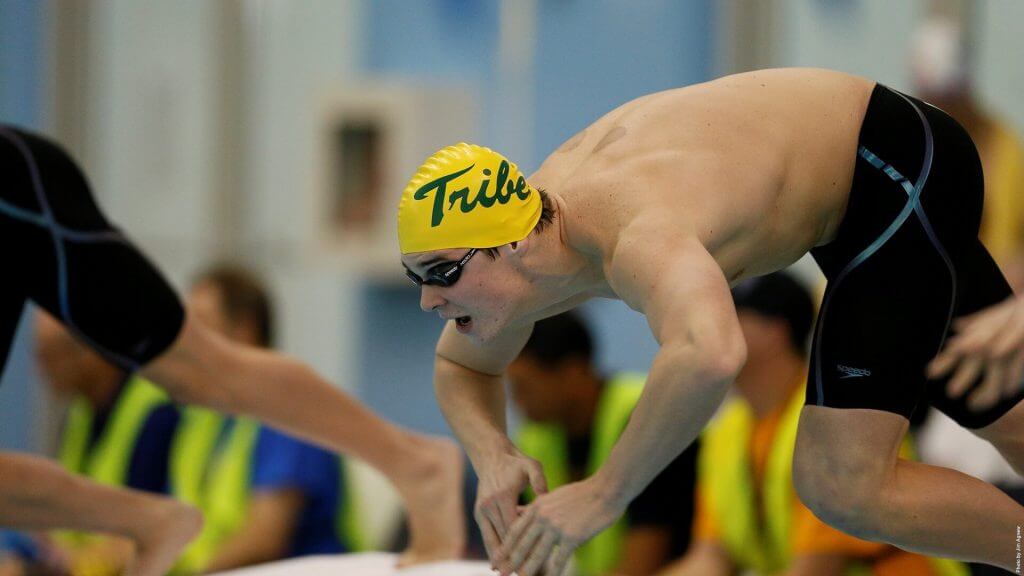Mid-Major Programs: The Backbone of Collegiate Swimming (Commentary)

Mid-Major Programs: The Backbone of Collegiate Swimming (Commentary)
Mid-Major Division I swimming is the glue that holds together collegiate swimming. Before diving into the details, this is certainly not meant to discredit the efforts, abilities, or any other aspect of athletes that do not fall into this category in any way. A lot of the experiences that swimmers share across all division levels, or across collegiate institutions, are easily comparable. Rather, by highlighting the mid-major portion of NCAA swimming, it brings an awareness to an area of the sport that is continuously stomped on and taken for granted.
First, let’s define what a “Mid-Major” institution looks like. Any school that sits out of the Power 5 conferences (ACC, Big Ten, Big XII, Pac 12, and SEC) but is a recognized Division I institution would be considered a Mid-Major school. Some of the most prominent programs in the Mid-Major category include the United States Naval Academy, the University of Hawaii, Akron University, and Brigham Young University. Some of the most popular Mid-Major conferences include the Atlantic 10 (A-10), the Coastal Collegiate Sports Association (CCSA), the Colonial Athletic Association (CAA), Conference USA (C-USA), the Ivy League, and the Patriot League. These schools and conferences have had major success and remain powerful entities in Mid-Major swimming. While there are dozens of others to promote, the bottom line is that these institutions provide so much opportunity for prospective, talented swimmers. But, one of the major downfalls is that Mid-Major schools, and the athletes that perform under their banners, are not received as such.
As we have seen over the years, many Mid-Major programs have taken drastic, “money saving,” efforts and slashed their swim programs. Yes, as mentioned earlier, programs across other divisions have faced these same cuts, but the implications or worry that your program could be on the chopping block is not nearly as prevalent in major Division I schools. Personally, as a swimmer at a Mid-Major institution, it was heartbreaking seeing other Mid-Major schools, even ones in my own conference, receive the horrific news of their programs being cut. Especially in the past year, it truly makes you think that no one is safe.
Regardless, with what little credit we are given, we still show up, put in the work, and produce great athletes. Not only that, we produce future emblems of swimming in terms of coaches and other standout members of the community. Through the height of the fall when it seemed as if more programs were falling by the day, Mitch Dalton, a JMU men’s swimming alumni, a program which cut their men’s team in July 2007, highlighted in a Twitter thread the impacts of Mid-Major swimming beyond the pool following the announcement that William & Mary would be cutting both its men’s and women’s programs.
Dalton wrote:
“Besides the immediate impact on these SAs – let’s look at this ripple on international swimming. The USA is the greatest swimming power in the world. There are many examples of our national team being impacted by people from mid-majors” (@MitchDaltonNJT, September 3, 2020 via Twitter).
He then goes on to point out important figures in the sport, such as Greg Meehan, the head coach of Stanford, who coached William & Mary, as well as UVA assistant Tyler Fenwick, who attended W&M and just helped lead the UVA women to their first national title. Similar is Todd DeSorbo, who has been on a roll as UVA’s head man. Without his tenure at the University of North Carolina-Wilmington (UNCW), who knows where DeSorbo would be. Being a mid-major swimmer involves more than practices and performance. Many times, we understand the power we have in not necessarily attending the “fastest” schools. We want to contribute and give back in a major way.
I label the Mid-Major programs as the backbone of college swimming because without them, there would be so much lost opportunity and inequitable opportunities for thousands of swimmers across the country. As mentioned earlier, this is not meant to discredit anyone else competing for institutions in other divisions, or other athletic entities, as each is an important piece to the puzzle in some way.
We know we aren’t Olympic-caliber athletes (in most cases), but our presence in the sport reflects years of passion, experience, and continued success. Yes, the typical Mid-Major team sees little to nobody compete at major NCAA competitions, let alone winning titles, but we keep collegiate swimming alive because we are grand in size and want the same thing everyone else does – a meaningful college athletic experience.
All commentaries are the opinion of the author and do not necessarily reflect the views of Swimming World Magazine nor its staff.




Great article. Of course, when considering colleges, academic fit is first and foremost along with a fit for intended majors. We work with our athletes on their college selection process and start with our list of 30 or so colleges with men’s swimming programs but NO FOOTBALL. These are all in the mid-major category. The women have more of a choice but as we’ve seen, that isn’t a guarantee and so we look to those first. Don’t get me wrong, we are generally fans of the W&M program and have it on several lists most years but, especially with the men, we like to avoid the colleges and conferences with FBS football programs at the mid-major level. There is just simply too much financial drain to athletic programs in the name of football programs and swimming, men’s swimming in particular, has been the casualty of that.
East Carolina is a school that dropped swimming. The
women filed a Title 9 suit and got reinstated. The men have no recourse except to appeal to the higher powers of the University. Likely another Mid Major program gone.